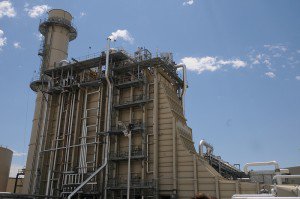The Forces Driving Lower Carbon Emissions
- October 29, 2012
- Carol Winkel

One of the trends since the release of the Council's Sixth Power Plan in 2010 has been reduced carbon emissions from the electricity sector.
In a recent presentation on CO2 emissions, Power Division Director Charlie Black talked about the forces driving this reduction.
A major factor is the increasing use of gas-fired generation made possible by low-cost natural gas from shale. When gas-fired generation displaces coal-fired generation, carbon emissions are reduced in two ways. First, natural gas contains less carbon than an equivalent amount of coal. Second, modern gas-fired power plants convert each unit of fuel into electricity more efficiently than older coal-fired power plants.
Black also noted that the economy is becoming less energy-intensive, which further contributes to lower carbon emissions. The region's success in acquiring energy efficiency and growing renewable resources like wind are also factors in lowering emissions.
The shift is happening nationally as well. A recent report by the Brattle Group found that coal retirement projections are even more sensitive to future market conditions than to regulations. The new study finds that 59,000 to 77,000 megawatts of coal plant capacity are likely to retire over the next five years--about 20 percent of U.S. coal-fired generating capacity. Brattle also calculates that a $1 drop in gas price would double the magnitude of coal plant closures.
"Overall, the Brattle Group report is the latest signal that we appear to have moved into a phase where the composition of the nation's power generating fleet is undergoing a major change," notes Black.
"Many of the coal plants most likely to retire are older, less efficient units, which will be replaced largely by new, lower carbon-emitting natural gas-fired plants. As a result, we can probably expect to see further significant decreases in the total output of carbon dioxide from the U.S. electricity sector."



